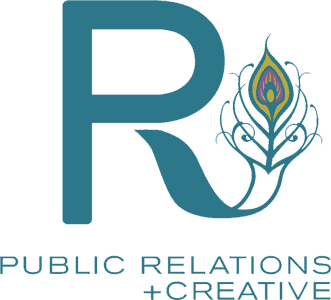For a long time, public relations (PR) lived in its own silo—focused solely on media relations, earned coverage and brand reputation. Marketing and advertising were separate entities, each working within their own lanes. But today, in the age of digital-first everything, PR is no longer just about press releases and media pitches. Instead, it’s about shaping a brand’s voice across all communication channels—paid, earned, shared, and owned.

That’s where the PESO model (Paid, Earned, Shared, and Owned media) comes in, offering a holistic approach to brand storytelling. When applied correctly, PESO creates a stronger, more consistent brand presence across all touchpoints using integrated communication strategies.
“Gone are the days when PR was only about media relations,” says Emily Reynolds Bergh, founder of R Public Relations (RPR). “Using the PESO model, we help clients leverage every communication channel in an intentional and coordinated effort, ensuring their message isn’t just heard—but amplified.”
Breaking Down the PESO Model
The PESO framework, created by PR expert Gini Dietrich, blends traditional PR efforts with digital marketing strategies. Here’s how each component works together:
1. Paid Media: Amplify Your Reach
Paid media includes social media ads, sponsored content and pay-per-click (PPC) campaigns. While PR has traditionally shied away from paid efforts, they’re now essential in getting your brand in front of the right audience at the right time.
💡 Example: If we secure an incredible media placement for a client, why not amplify it with a small paid boost on LinkedIn or Instagram?
2. Earned Media: PR’s Traditional Sweet Spot
PR professionals have always excelled at earned media, including media placements, interviews, podcast appearances, and industry recognition. This third-party validation builds credibility and trust like nothing else.
💡 Example: RPR secures a feature for a client in a major publication. By integrating it into a larger PESO strategy, we don’t just celebrate the win—we maximize it.
3. Shared Media: The Power of Organic Engagement
Shared media encompasses social media interactions, customer testimonials, influencer partnerships, and brand collaborations. This is where your audience gets involved—sharing, commenting and creating a dialogue around your brand.
💡 Example: A loyal customer posts about your product on Instagram. When shared on your brand’s page, it adds authenticity to your marketing efforts.
4. Owned Media: The Foundation of Your Brand Story
Owned media includes content you control and create—your website, blog, email campaigns, and brand newsletters. These channels are the foundation for your messaging, positioning your brand as an industry leader.
💡 Example: We can recommend updates if we see gaps in a client’s website content.

Why PESO Works for Today’s Brands
A fully integrated PESO strategy ensures that a brand’s message is consistent, cohesive and effective across all platforms. It removes communication silos and allows brands to leverage multiple channels to build authority, credibility and engagement. While traditional marketing has focused on generating leads and driving sales, PR has focused on brand trust. We are moving toward more integrated communication strategies that impact brand awareness and a business’s bottom line.
“At RPR, we don’t just secure media hits and call it a day,” says Bergh. “We help clients integrate every aspect of their communications, so they see measurable impact across paid, earned, shared, and owned channels.”
The result? A more powerful, data-driven approach to PR and marketing that delivers results beyond traditional media placements.
The Future of PR Is Integrated Communication Strategies
The days of PR living in a vacuum are over. Today, brands must think bigger, connect the dots and embrace an integrated approach, leveraging PESO to maximize visibility, credibility and brand loyalty.
Want to learn how RPR can help you build an innovative, modern and results-driven PR strategy? Let’s chat.
